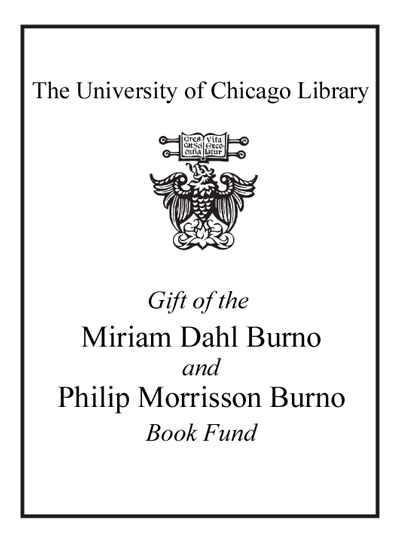Mortuary monuments and burial grounds of the historic period /
Saved in:
| Author / Creator: | Mytum, H. C. |
|---|---|
| Imprint: | New York : Kluwer Academic/Plenum Publishers, c2004. |
| Description: | xxv, 274 p. : ill. ; 24 cm. |
| Language: | English |
| Series: | Manuals in archaeological method, theory, and technique |
| Subject: | |
| Format: | Print Book |
| URL for this record: | http://pi.lib.uchicago.edu/1001/cat/bib/5064698 |
Table of Contents:
- List Of Figures
- List Of Tables
- I. Introduction
- 1. A Brief History - Historical Mortuary Archaeology
- 1.1. Antiquarian interests
- 1.2. The Origins and Development of Contemporary Research
- 2. Theoretical Approaches
- 2.1. Culture-history
- 2.2. Functionalist Approaches
- 2.3. Structuralist Approaches
- 2.4. Marxist Approaches
- 2.5. Symbolic studies
- 2.6. Other recently developed approaches
- Summary
- II. Folk Traditions and High Culture: Funerary and Commemorative Practice to the Early 18th Century
- 1. Death
- 1.1. The Good Death
- 2. The Funeral Mourning Dress and Funeral Expenditure
- 3. Burial Grounds
- 3.1. Location
- 3.2. Spatial Arrangement
- 3.3. Burial
- 4. Internal Memorials
- 4.1. Materials
- 4.2. Forms
- 5. External Memorials
- 5.1. Materials
- 5.2. Forms
- 5.3. Decoration and Symbols
- 6. Conclusions
- III. A Maturing Industry: the Mid 18th century to Early 20th Century
- 1. The Funeral
- 1.1. The Coffin and Preparation of the Body
- 1.2. Increasing Commercialisation
- 1.3. Popular Fears Regarding Burial
- 2. Mourning
- 2.1. Mourning Jewelry
- 2.2. Other Mourning Material Culture
- 3. Commemoration
- 4. Burial Grounds and Cemeteries
- 4.1. Location
- 4.2. Intra-site spatial arrangement
- 5. Internal Memorials
- 5.1. Materials
- 5.2. Form and style
- 6. External Memorials
- 6.1. Materials
- 6.2. Forms
- 7. Decoration and Symbols
- 8. Text
- 9. Conclusions
- IV. A Marginalized Activity: From After World War I
- 1. The Funeral
- 1.1. The Context of Death
- 1.2. Changes in Organization
- 1.3. Coffins and Caskets
- 1.4. Choices in Body Disposal
- 2. Mourning
- 3. Commemoration
- 4. Burial Grounds and Cemeteries
- 4.1. Location
- 4.2. Intra-site Spatial Arrangement
- 5. Internal Memorials
- 6. External Memorials
- 6.1. Materials
- 6.2. Forms
- 6.3. Decoration and Symbols
- 6.4. Text
- 7. Conclusions
- V: Production and Consumption
- 1. Funerary and Mourning Paraphernalia
- 1.1. Coffins and Fittings
- 1.2. Mourning Paraphernalia
- 2. Commemoration
- 2.1. Materials and the Process of Monument Manufacture
- 2.2. Production and the Role of Carvers
- 2.3. Commissioning and Production of Monuments
- 3. Temporal Change
- 4. Spatial Change
- 4.1. Regional Studies
- 4.2. Distribution of Carvers'' Products
- 4.3. Intra-site Patterns
- 5. Conclusions
- VI
- 1. The Relationship between Living Communities and Burial Ground Populations
- 2. Status
- 3. Family Structures
- 3.1. Scale of Family
- 3.2. Male Roles
- 3.3. Female Roles
- 3.4. Children
- 3.5. Family Relationships
- 4. Institutional Structures
- 5. Patterns of Dependency
- 6. Social Hierarchies
- 6.1. Elite Burial
- 6.2. Pauper Burial
- 7. Necrogeography
- 8. Emulation
- VII. Identities
- 1. Religious Affiliation
- 1.1. Christian denominations
- 1.2. Other religions
- 1.3. Combined burial grounds
- 2. Ethnicity
- 3. Linguistic Group
- 4. Vocational Identity
- 4.1. Religious leaders
- 4.2. Military
- 4.3. Other identities
- 5. Conclusions
- VIII. Attitudes to Death, the Body and Remembrance
- 1. The Manner of Death
- 1.1. The good death
- 2. Attitudes to the Body
- 2.1. Interment
- 2.2. Cremation
- 2.3. The Unburied Body
- 2.4. The Body through Representation
- 2.5. Symbolism and Epitaphs
- 3. Grave Refurbishment
- 4. Conclusions
- IX. Carrying Out a Study
- 1. Methodological Issues
- 1.1. Dating
- 1.2. Location
- 1.3. Classification of Memorials
- 1.4. Demography
- 2. Project Fieldwork Planning
- 2.1. Types of Study
- 2.2. Preparatory Work
- 2.3. Health and Safety
- 2.4. Etiquette in the Burial Ground
- 3. Sampling
- 3.1. Spatial Sampling
- 3.2. Sample Size versus Sample Detail
- 3.3. Student Projects
- 3.4. Excavation
- 4. Survey
- 4.1. Surface mapping
- 4.2. Geophysical survey
- 4.3. Photography
- 5. Researching Memorials
- 5.1. Written Recording
- 5.2. Images
- 6. Analysis
- 7. Excavation
- X. Conservation, Education and Display
- 1. Ethics and Methods of Conservation
- 1.1. Landscape Conservation
- 1.2. Memorials
- 2. Historic Burial Grounds in Education
- 2.1. Mathematics
- 2.2. Science
- 2.3. Information Technology
- 2.4. Social History
- 2.5. Religion
- 2.6. Art
- 2.7. Literature
- 2.8. Folklife

